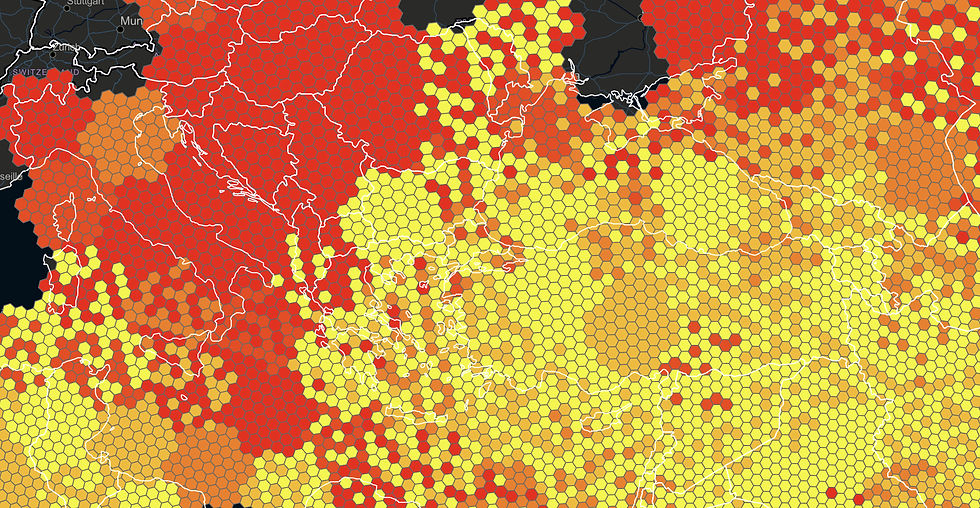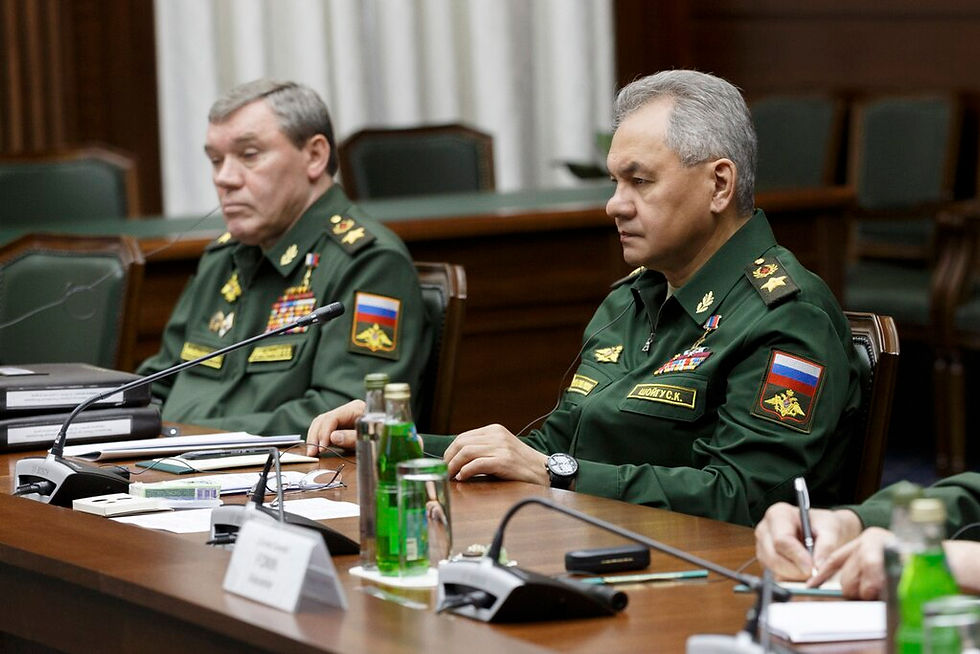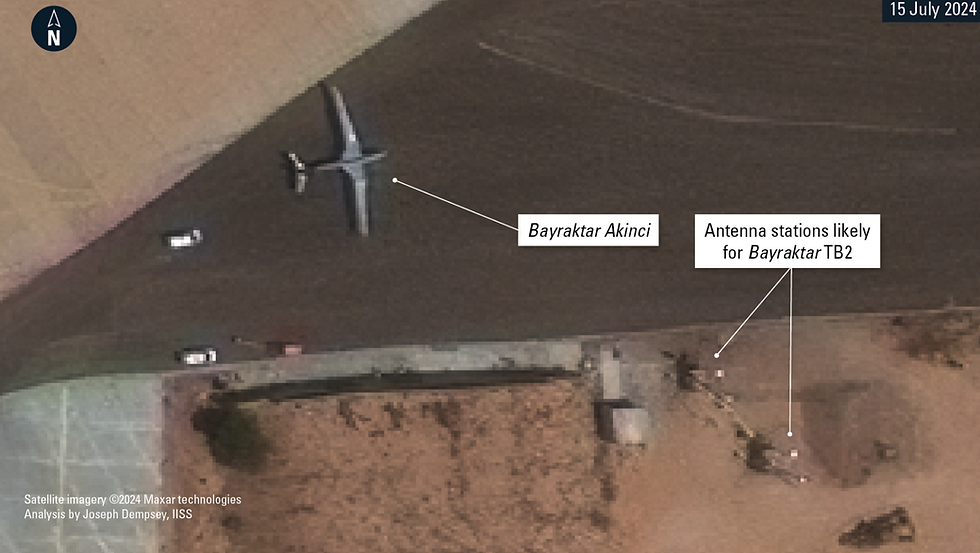"This report provides an overview of GPS interference in Libya for August 2024."

This report provides an overview of GPS interference in Libya for August 2024. We used the following tools to conduct our jamming and spoofing research, as well as several open and public sources of information to reach our investigative conclusions.
A Background of Libya’s Civil Conflict

Like many other countries in northern and central Africa, Libya is no stranger to geopolitical conflict. The core of today’s conflict in Libya started in 2011 during the uprising against the long-standing regime of Muammar Gaddafi.
Shortly after the ousting of Gaddafi in 2011, Libya took a plunge into a shifting struggle for power, leading to a full-scale civil war in 2014. The civil war was led by two primary rival factions: the Government of National Accord (GNA) in Tripoli, Libya, and the Libyan National Army (LNA) in the east of the country.
The struggle for power between these two entities, along with numerous other tribal and regional groups, fractured the political landscape and led to continued regional instability, much of which we can still see today.
Both sides explored new warfare tactics throughout the civil war from 2014 to 2020, including GPS-enabled technologies like UAVs and other communications warfare tactics.
Thousands of UAV airstrikes were reported over the six years, most of which used commercial drones guided by standard GPS navigation. As a result, GPS jamming and RF interference took a sharp rise, used by both the GNA and LNA to try and gain a tactical advantage.
Not only was GPS jamming employed to hinder navigation and interrupt communications, but it was also used to dilute the effectiveness of precision-guided weapons, surveillance systems, and other military assets like drones.
Key Moments in Recent History
The following describes some of the critical moments in recent history that have led us to the current state of the conflict in Libya.
April 4, 2019 - October 23, 2020:
Khalifa Haftar, former warlord turned politician supporting the LNA in eastern Libya, attacked the GNA regime in the capital city of Tripoli. The unsuccessful months-long attack led to both sides signing a ceasefire treaty on October 23, 2020.
* Turkey was accused of sending military assistance (weapons and mercenaries), diplomatic support, and security cooperation to the GNA administration during this time.
March 2021:
A new political party, the Government of National Unity (GNU), was formed and led by Prime Minister Abdul Hamid Dbeibeh. The GNU was formed to achieve political peace in the country.
* Turkey has been a notable supporter of the GNU since its formation. The GNU succeeded the GNA administration.
February 2022:
A parallel government is formed in the east of Libya, challenging GNU authority and furthering military and political tensions across the country.
January - August 2023:
Failed elections, increased militant activity, clashes between rival factions, and growing humanitarian concerns led to continued conflict and political instability, much of which turned violent.
June 2023:
Reports of a drone attack at a base in Libya used by Russian paramilitary group Wagner. No casualties were reported.
July 2024:
Italian customs team seizes two Chinese-built military drones en route to Libya. The drones were broken down into numerous parts disguised as wind turbine components. The find reportedly came after US intel tipped off Italian customs.
August 2024:
Satellite imagery shows a Turkish-made UAV in the hands of Libyan GNA forces - marking a significant advance in the GNA’s war drone inventory.
* Concerns of civil war continue to grow for numerous reasons, including regular and violent clashes, the inability to hold peaceful elections, and heightened fears over political violence.
International Involvement with Libya’s Civil Conflict

*Note: Western nations have criticized both Russia and Turkey for attempting to destabilize the region over the past decade, backing different political factions with weapons, equipment, military support, and other political cooperation.
Turkey
Turkey has seemingly been interested in having its hands in the Libyan conflict since at least the start of the civil war in 2014. Turkey was a major backer of the GNA during the civil war from 2014-2020, providing the faction with military aid, combat training, and equipment.
Turkey’s support for the GNA was crucial in fending off the LNA during the attack on Tripoli shortly before the ceasefire was signed in October 2020.
Following the formation of the new political party, the Government of National Unity (GNU), in 2021, Turkey remained an ally and continued its support for the new (yet related) party.
Why is Turkey Interested in Supporting the GNU?
Turkey’s involvement with the GNA (past) and GNU (current) is partly driven by the desire to enhance and build its influence in the Eastern Mediterranean region, expected mainly through energy exploration and maritime rights.
November 2019: Turkey signed a maritime boundary agreement with the GNA, assumingly aimed at securing its interests in the Mediterranean - which counter Greek and Egyptian claims to the contested waters.
Military and diplomatic influences are also likely reasons for Turkey’s support for the GNU. According to regional think tank experts, Turkey wants to solidify its military presence in Libya and expand its diplomatic leverage in Northern Africa. Supporting the GNU also positions Turkey as a key chess piece in regional geopolitics, although that strategy relies more on perception than action.
Turkey’s Potential Gains in Libya Include:
Energy and Economic Benefits: Control and influence over Libyan oil and gas resources could benefit Turkey’s energy needs and related economic interests.
As of April 2024, Libya’s crude oil production exceeded 1.25 million barrels per day.
Strategic Positioning: Enhancing Turkey’s footprint in the Mediterranean and the north of Africa could leverage broader geopolitical negotiations.
Rival Counterbalance: By supporting the GNU, Turkey can counterbalance the influence of rival powers like Egypt and Greece - both of which have opposing interests in the region.
Russia
Russia’s support for the Libyan National Army (LNA), led by General Khalifa Haftar, started taking shape around 2016 when it began actively supplying military equipment, training, and political backing to the faction. Some of the most noticeable support was through private military contractors like the Wagner Group - an ally of Russian leader Vladimir Putin.
Russia has maintained diplomatic relations with various Libyan factions, including the GNU, and hopes to remain a key mediator during the ongoing conflict.
Why is Russia Interested in Supporting the LNA?
Russia’s interests in Libya are not much different from those of other countries (like Turkey). Its interests include enhanced access to oil and gas resources, as well as the establishment of military bases for a greater influence in the North of Africa. With such significant oil reserves, securing access to the resources provides Russia with a broader, more lucrative energy strategy.
If Russia could seize military territory in the region and inherently expand its geopolitical influence, it could potentially help challenge Western and NATO authority - especially if it can maintain mediation control between the GNU and LNA parties.
Russia’s Potential Gains in Libya Include:
Access to Energy Resources: By gaining influence over Libya’s oil and gas resources, Russia could strengthen its energy sector and enhance its global leverage.
In 2023, Russia was the world’s fourth-largest Liquified Natural Gas (LNG) exporter, exporting over 32 million metric tons of LNG.
Strategic Military Presence: By establishing a foothold in Libya with military bases, Russia could reap significant military advantages and enhance its geopolitical reach.
Diplomatic Leverage: By engaging with multiple factions (the GNU and the LNA), Russia puts itself in a position to negotiate favorable terms.
GPS Jamming and Spoofing in Libya (August 2024)

Source: spoofing.skai-data-services.com
While GPS jamming and RF interference have been used by opposing forces across the country since the rise of commercial UAV technology, most of the jamming has occurred in and near the capital city of Tripoli. Tripoli is situated on Libya’s northern coast, bordering the Mediterranean Sea - which is already seeing a fair share of RF interference (mainly in the east) due to the ongoing occupation of Palestine by Israel.
Tactical Focus
One of the most significant tactics throughout Libya’s political and military conflict has been the deployment of low-cost UAVs (drones) and precision-guided munitions. As mentioned above, thousands of UAV airstrikes were reported throughout Libya’s civil war, and the story is no different today.
While used in different ways, both commercial and military drones have been employed by LNA and GNU forces.
Commercial Drones
Commercial drones are likely what you’d expect - drones that are available for civilian use, often low-cost, and easily acquired. These consumer-grade, off-the-shelf drones are used in combat for surveillance, reconnaissance, and even propaganda purposes, although they could theoretically be modified to include weapons or explosives systems.
According to reports, both LNA and GNU forces (GNA forces throughout the civil war) have used commercial drones for the above-stated purposes. Intelligence is key in these types of conflicts, and high-definition cameras can provide footage suitable for actionable military intelligence.
Still, the GPS signals that commercial drones use are easily jammed and spoofed, as typical GPS signals (RF signals) are relatively weak and can be overpowered with a simple and easy-to-use GPS jammer.
Since GPS jammers are so easy to use and readily available, especially in combat scenarios, it is common practice to use them at base, in high-risk scenarios, and anywhere else that an enemy surveillance or reconnaissance drone might be used.
This might explain at least some of the GPS jamming signals identified in Tripoli over the past couple of months.
Regardless, without technology that helps a drone navigate an environment where GPS signals are unavailable (GPS-denied environments), it becomes a strategy that has the very real potential of failing - at least in terms of successful intelligence gathering.
Military Drones
Compared to commercial drones, military drones have been far more prominent in the Libyan conflict over the past decade. Various political factions, namely the LNA and GNU forces, have used military drones for everything from surveillance to targeted airstrikes.
Most military drones are capable of carrying out precision (GPS-guided) strikes, especially those advanced UAVs used by the UAE, Turkey, and other foreign actors across the region.
Turkey, in particular, has supported the GNU with its Bayraktar drones.
In fact, satellite imagery from August 2024 shows that GNA/GNU forces are equipped with Turkish Bayraktar TB2 and Bayraktar Akinci UAVs, both of which are highly complex and advanced war drones. Satellite images also showed infrastructure to control the drones, including antennas and control towers (shown below).

Source: Maxar Satellite Imagery
The GNU has been using the Turkish TB2 drones extensively and has been receiving additional UAV support from others as well. According to some estimates,
While military drones also use GPS guidance as their primary navigation system, they are also commonly equipped with or can be programmed to operate without using GPS signals. These are called GPS-denied drones and can navigate using different techniques.
For more information on how GPS-denied drones work, visit this blog post HERE.
Looking Ahead
While we can’t be certain about the trends of GPS jamming and GPS spoofing in Libya over the coming months and years, one thing remains certain - the political and military unrest looks far from over.
Given the history of conflict over the past decade and the tactics used in combat and surveillance, we will likely continue to see GPS jamming over Tripoli, at least in the near future. How much we will see it and whether or not it will increase to dangerous levels for public flights, for example, remain a mystery.
As new technologies in GPS-denied navigation and GPS jamming continue to develop and evolve, we can assume that so will the jamming trends. GPS jamming and spoofing maps like those used to generate this report will be an interesting point of reference as we move forward.
Don’t forget to check back in with us for periodic updates.

Comments